Anti-Aging beauty News and Info at ANTIFACELIFT.com
Here we post interesting videos, articles, research publications and other interesting information that pertain to anti-aging.
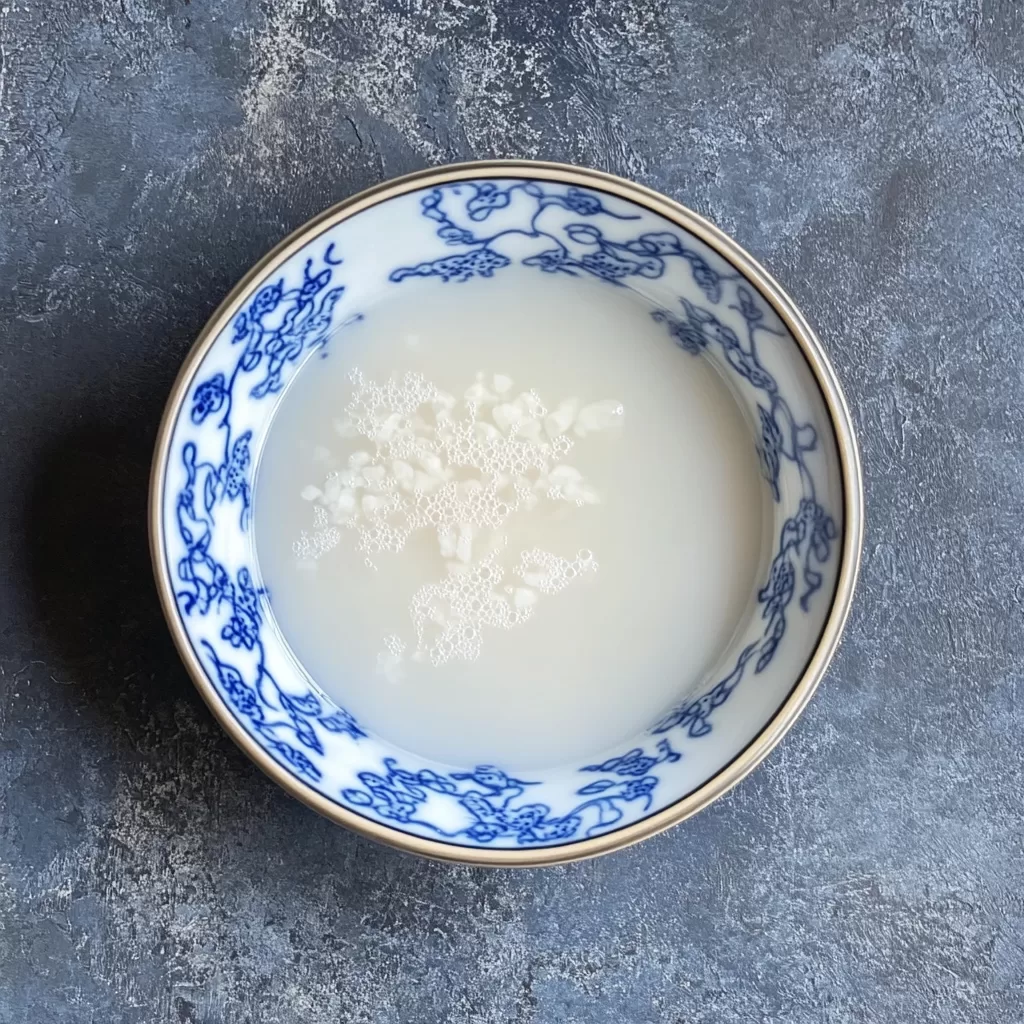
Rice Water: An Ancient Beauty Secret for Ageless Skin?
Rice water, a byproduct of cooking rice, has been a staple in Asian beauty routines for centuries. Could this simple kitchen ingredient hold the key to younger-looking skin? Let’s dive into the potential anti-aging benefits of rice water.
A Nutrient-Rich Elixir:
Rice water is packed with vitamins, minerals, and antioxidants that are known to benefit the skin. These include:
- Ferulic acid: A powerful antioxidant with anti-inflammatory properties that helps protect the skin from sun damage.
- Allantoin: Known for its soothing and healing properties, allantoin can calm irritation and promote cell regeneration.
- Vitamins B and E: Essential for skin health, these vitamins help improve skin tone, texture, and elasticity.
Potential Anti-Aging Benefits:
- Reduced wrinkles: The antioxidants in rice water may help neutralize free radicals, which are responsible for breaking down collagen and elastin, leading to wrinkles and sagging skin.
- Improved skin elasticity: Rice water may help improve skin elasticity, making it appear firmer and more youthful.
- Brighter complexion: Its ability to promote cell turnover can result in a brighter, more even skin tone.
- Sun damage protection: The ferulic acid in rice water offers some protection against the harmful effects of UV radiation.
How to Use Rice Water:
- Cooked Rice Water: Simply save the water you use to cook rice. Let it cool and apply it to your face using a cotton ball.
- Fermented Rice Water: Soak rice in water for a day or two, allowing it to ferment. This process increases the concentration of antioxidants. Strain the water and use it as a toner or face mask.
Important Note: While rice water is generally safe for topical use, it’s always a good idea to do a patch test before applying it to your entire face. If you experience any irritation, discontinue use.
The Bottom Line:
Rice water is a natural and affordable option for those seeking to incorporate anti-aging practices into their skincare routine. While more research is needed to confirm its efficacy, anecdotal evidence and its rich nutrient profile suggest that it may indeed hold the key to unlocking a more youthful and radiant complexion.
- Dr. Glen Jeffery, a professor of neuroscience at University College London, discusses the effects of light on biological systems, particularly photobiomodulation and its impact on mitochondria.
- Light provides energy to biological systems, and sunlight has been a key driver of evolution.
- Mitochondria are the powerhouses of cells and play a crucial role in metabolism and energy production.
- Light, particularly in the red and near-infrared spectrum (660-900 nanometers), can enhance mitochondrial function by increasing the efficiency of the respiratory chain.
- This can lead to various health benefits, including improved blood sugar control, enhanced cognitive function, and better vision.
- Dr. Jeffery discusses his research on the effects of red light therapy on blood sugar levels and macular degeneration.
- He emphasizes the importance of spending time in natural sunlight and using light bulbs that emit red and near-infrared light.
- He also discusses potential future applications of red light therapy, such as using nasal devices to deliver light to the brain.
- For the best cost effective 660 nm Deep Red Light Therapy Spot Lamp, click the photo below:
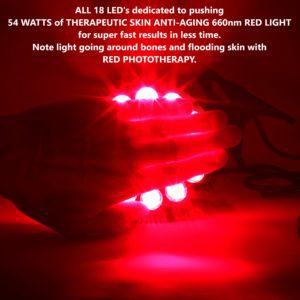

Female Pattern Hair Loss: Understanding Thinning Hair
Hair loss is a common concern, and it doesn’t just affect men. Female pattern hair loss, also known as androgenetic alopecia, is the most common type of hair loss in women. It can be a source of distress and affect your self-esteem. But you’re not alone, and there are ways to manage it.
Understanding the Cause:
Female pattern hair loss is caused by a combination of factors, including:
- Genetics: If female pattern hair loss runs in your family, you’re more likely to experience it.
- Hormones: Changes in hormone levels, particularly during menopause when estrogen levels decline, can contribute to hair loss.
- Age: Hair loss becomes more common with age.
What to Look For:
Unlike male pattern baldness, female hair loss usually doesn’t lead to complete baldness. Here are some signs to watch for:
- Gradual thinning of hair across the scalp, often starting at the crown.
- A widening part line.
- Hair that becomes finer and easier to break.
Improved Vision with Red Light Therapy:
In this video by Dr. Andrew Huberman, he discusses a recent study on the use of red light therapy to improve vision. Here are the key points and benefits in detail:
-
Red Light Therapy for Vision Improvement: The video explores a study by Glenn Jeffries Lab at University College London which showed that red light therapy can improve visual acuity, which is the sharpness of vision.
-
Light Wavelength and Dosage: The study used red light with a wavelength of around 670 nanometers. People viewed the light for three minutes, once a week, within the first three hours of waking. Interestingly, the light source was simply a red light filter placed over a standard flashlight.
-
Mechanism of Action: The light enters the eye and reaches the neural retina, which is a light-sensitive layer at the back of the eye. Red light exposure is thought to reduce reactive oxygen species, improve ATP production in the photoreceptor cells (rods and cones), and enhance their ability to convert light into electrical signals. These signals are then transmitted to the brain through the retinal ganglion cells.
-
Benefits: The study showed a 17-20% improvement in visual acuity in participants aged 40 and over. This suggests that red light therapy may be beneficial for people experiencing age-related vision decline.
-
Safety: It is important to avoid bright light sources that can damage the retina. Blink naturally if the light is uncomfortable.
-
Sources of Red Light: There are various red light therapy devices available, ranging from phone-sized to person-sized. The study used a simple red light filter over a flashlight, suggesting that a homemade device might also be effective.
-
Important Note: The red light therapy in this study was effective only for people aged 40 and over.
- For the best cost effective 660 nm Deep Red Light Therapy Spot Lamp, click the photo below:

Video Outline :
- LED Light Therapy Can Help Prevent Sunburn and Heal Sunburns Faster
- Explanation: LED red and near infrared light therapy can help cells be powered up with ATP and protect collagen and elastin, reducing sunburn risk. It can also help speed up wound healing process for existing sunburns.
- Scientific studies are linked in the description box for further details.
- LED Light Therapy May Improve Age-Related Eye Degradation
- Caution: It is highly recommended to consult with an eye doctor before using LED light therapy for eyes.
- Explanation: A study suggests red light therapy (670 nanometers) for 3 minutes a day may improve eyesight in people over 40 years old. The theory is that red light therapy helps produce ATP in the retina, improving mitochondrial health and delaying cone degradation.
- Important points:
- Look for low power LED light therapy (around 8 mW per cm squared).
- Discomfort around the eyes or having to squint indicates stopping the treatment.
- LED Light Therapy Can Help Heal Cold Sores Faster
- Explanation: A study showed that red light therapy (1072 nanometers) applied three times a day, 3 minutes each time, can heal cold sores 48 hours faster than a placebo light.
- LED light therapy devices designed for cold sores are available on Amazon.
- LED Light Therapy (Red and Near Infrared) Can Improve Acne
- Explanation: A study showed that red and near infrared light therapy (785 nanometers) applied six times can significantly improve acne in women between 18-45 years old.
- Red and near infrared light therapy is considered safe, noninvasive, and has wound healing and anti-inflammatory properties.
Best wavelength for hair growth
Determining the “best” wavelength for hair growth is complex, as individual factors and research findings vary. However, here’s a breakdown of current evidence regarding different wavelengths:
Red light (630-670nm):
- Widely studied and used: This range, particularly 650-660nm, has shown promising results in stimulating hair growth, potentially due to increased blood flow and cellular activity.
- FDA-cleared devices available: Several laser combs and helmets use this wavelength and are cleared (FDA does not approve devices) for hair loss treatment.
Near-infrared light (780-830nm):
- Emerging research: Studies suggest wavelengths like 810nm and 830nm might penetrate deeper, potentially reaching deeper hair follicle structures, but Deep Red Light already reaches the follicles. Where Near-Infrared makes a difference is for muscular therapy.
- Limited evidence: More research is needed to confirm their long-term efficacy and compare them directly to red light.
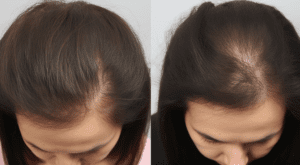 Shedding Light on Hope: Exploring Red Light Therapy for Hair Regrowth
Shedding Light on Hope: Exploring Red Light Therapy for Hair Regrowth
Hair loss can be a frustrating and emotionally challenging experience. While several treatment options exist, the search for safe, effective, and accessible solutions continues. In recent years, red light therapy (RLT) has emerged as a promising contender, particularly with the wavelength of 660 nanometers (nm) showing particular potential for hair regrowth.
What is Red Light Therapy?
RLT involves exposing specific areas of the body to low-level red light. This painless and non-invasive therapy is thought to work by stimulating cellular activity and improving blood flow. In the context of hair loss, the focus is on the scalp, where red light may:
- Increase energy production: Red light photons are absorbed by cells, potentially boosting their energy production (ATP) and promoting hair follicle growth.
- Reduce inflammation: Chronic inflammation can contribute to hair loss. RLT may have anti-inflammatory properties, creating a healthier environment for hair growth.
- Improve blood circulation: Increased blood flow delivers essential nutrients and oxygen to hair follicles, supporting their optimal function.
660nm: A Wavelength of Promise
While various red light wavelengths are used, 660nm seems to hold particular promise for hair regrowth. Studies suggest it effectively penetrates the scalp, reaching the hair follicles where it can exert its potential benefits.
What Does the Research Say?
Several studies have explored the link between 660nm RLT and hair regrowth, with encouraging results:
- A 2014 study showed significant hair growth in men with androgenetic alopecia (male pattern baldness) after 24 weeks of 660nm RLT treatment.
- A 2013 study observed increased hair density and thickness in women with female pattern hair loss after using a 660nm RLT device for 6 months.
However, it’s important to note that research is ongoing, and larger, long-term studies are needed to solidify the evidence base.
Is RLT Right for You?
While RLT appears promising, it’s not a guaranteed solution for everyone. Factors like the cause and severity of hair loss, individual response, and treatment consistency can all influence results. Consulting a dermatologist or trichologist can help determine if RLT is a suitable option for your specific case.
Things to Consider:
- Treatment options: RLT devices vary in price and quality. Consult a healthcare professional for guidance.
- Realistic expectations: RLT results may take time and may not lead to complete hair restoration.
- Potential side effects: RLT is generally safe, but mild side effects like scalp irritation are possible.
Shining a Light on the Future
Red light therapy, particularly at 660nm, offers a potentially safe and non-invasive approach to hair regrowth. While more research is needed, the current evidence suggests it could be a valuable tool in the fight against hair loss. If you’re struggling with hair loss, exploring RLT with your doctor’s guidance could be a step towards a fuller head of hair and renewed confidence.
Disclaimer: This blog is for informational purposes only and is not intended as medical advice. Please consult with a healthcare professional before starting any new treatment, including red light therapy.
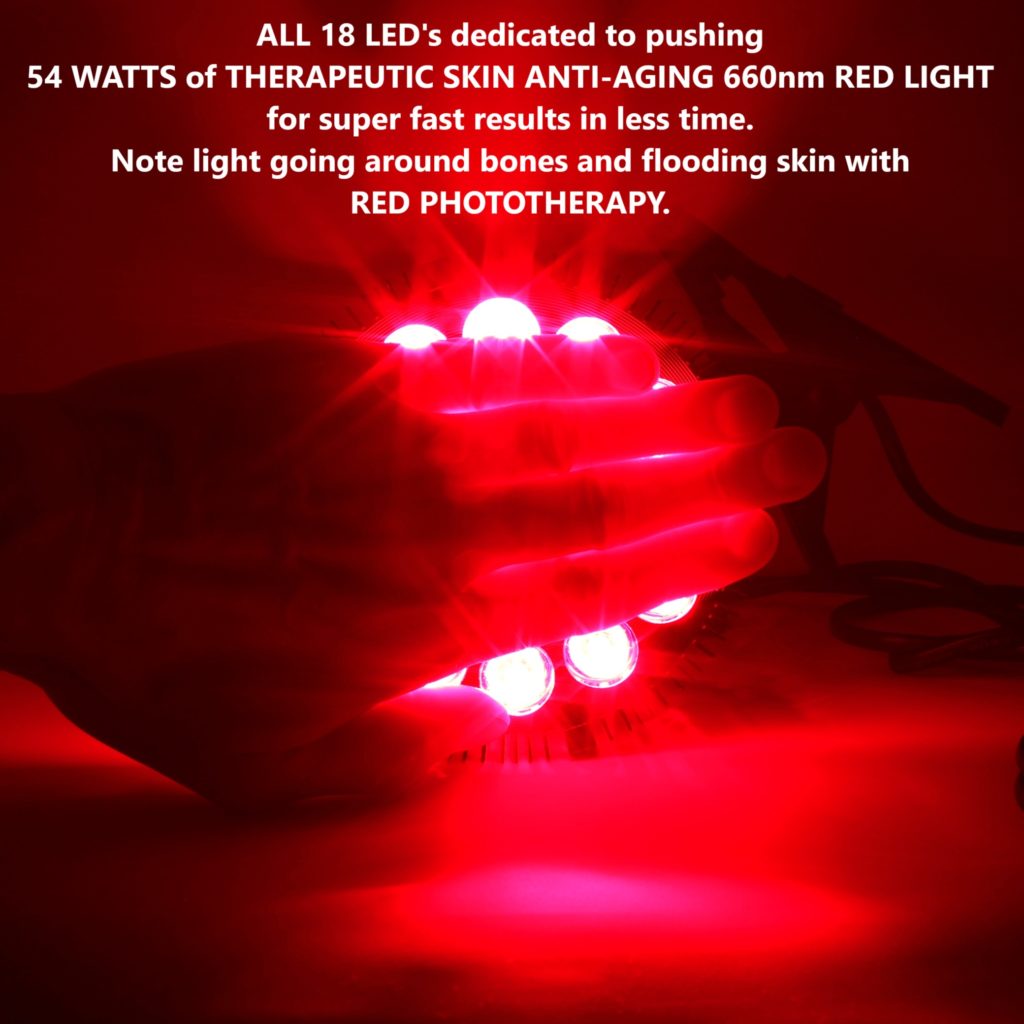 Click on image to go to our high power Anti-Aging / Anti-Hair Loss Deep Red Light Therapy Spotlight
Click on image to go to our high power Anti-Aging / Anti-Hair Loss Deep Red Light Therapy Spotlight
RED LIGHT THERAPY WORTH THE HYPE?
#dermatologist @DrDrayzday
Video Transcript
Well hey guys in today’s video I’m gonna cover a red light therapy for photo rejuvenation that’s gonna be your anti-aging goals of improving skin tightness laxity firming up skin and improving wrinkles you all have asked me about this a fair number of times light therapy with red lights or is done with leds leds stands for light emitting diode there are a variety of different LEDs that are used in skincare I’ve talked about a few of them in other videos including my review and usage of the iris or professional hair device that I use it uses LEDs to stimulate hair regrowth along with lasers and I’ve also talked about it in my review of the Neutrogena light therapy masque so check those videos out if you’re interested in LEDs for hair loss and/or acne and talk about them in that those videos but for anti-aging purposes we have quite a bit of evidence showing that red light therapy can exert some degree of skin tightening improvement and skin firmness and the improvement of wrinkles the way that LEDs work in the treatment of skin diseases and exerting different changes in the skin that might be desirable is through something called photo bio modulation essentially there are different things within our skin that can be excited by different wavelengths of the electromagnetic spectrum whether that be visible light or ultraviolet radiation or even infrared radiation just looking at red light alone there’s one small study only 23 people and it looked at individuals getting red light therapy for 20 minutes three times a week and in that study they actually showed some notable changes and wrinkles fine lines smoothness skin texture there was another small study that combined both red light therapy as well as near-infrared therapy for the treatment of wrinkles around the eyes and in that study they alternated by treatment with near-infrared treatment and showed there was an improvement in wrinkles around the eyes an improvement in the skin texture around that area and skin smoothness and this was demonstrated out to I believe 29 days so they looked at it for about a month there was a double-blinded placebo-controlled study that actually looked at either infrared therapy alone red light therapy alone combination infrared and red therapy or placebo and in that study they were looking obviously for photo rejuvenation and they showed an improvement in skin elasticity and in wrinkle severity they also took imprints of the skin and they showed you know an improvement wrinkle depth with both infrared treatment and red light treatment in comparison to placebo treatment showed zero improvement there was zero change with placebo but interestingly they also looked at collagen in the skin and they showed not only an improvement and collagen density and thickness but importantly the collagen was nicely structured and organized within the skin that’s important you know you can have increased collagen and be all on normal and that basically leads to that’s kind of you know what underlies a lot of thick scars is an increase in abnormally oriented and shaped collagen so you don’t want that this was nice tight well structure and layered out collagen that you would want to see to yield a skin firming outcome so they showed that with both infrared treatment and red light treatment they didn’t show it at all in the placebo but now the near-infrared treatment was superior to the red light treatment and they obviously showed no change with the with the placebo but the combination near-infrared and red white together showed the greatest outcomes and benefit and anti-aging so seems as though a combination of near infrared and red LED treatment yields kind of the best as far as skin tightening improving laxity this is something that might be pursued for example if you have sagging in the neck and it’s nice and not it is non-invasive you might not want to go through an invasive surgical procedure to lift the neck in which case this is something that that might help if you have prominent wrinkles around the eyes red light and near-infrared therapy in combination in particular can help and rejuvenating that area improving wrinkle depth and severity this also could be used around the mouth for wrinkles around the mouth just in spot focused areas or you have more prominent sagging and photo aging the cheeks the jowl area you definitely can see some modest benefit with using a combination of near-infrared and red light therapy LED treatment with red and near-infrared is in contrast to other modalities doesn’t generate in the heat in the skin so it has a lower risk of adverse side effects like hyperpigmentation for example so it’s pretty safe red light and near infrared light through LEDs can damage your eyes so it’s important that if you are using an at-home device that it be properly designed and equipped with eye protection in mind so for example the iris tour device that I use not for hit photo rejuvenation purposes but for hair regrowth done device as an example will not activate if the device is not properly positioned on your head the lights will not go the LEDs will not go off so it can definitely damage your eyes but it’s very safe otherwise at home who should not use LED based treatments either at home or in a office setting people with photosensitive diseases like lupus or polymorphous light eruption also if you are taking a medication that makes you sensitive to light you would not want to pursue this it could be very potentially caused a lot of problems for you and potentially be dangerous even so always check with your treating healthcare provider as far as asking about your medications there’s any contraindication how do you light based treatments that you buy to use at home differ from those that you would receive in office and a dermatologists office the outputs are not as strong as what you would receive in a dermatologists office however that doesn’t mean they can’t necessarily be effective the problem is is that you really don’t have much of an objective way to know which devices sold for at-home use are better are worth it or you know the best there’s no kind of oversight and regulation as far as that goes so for example you can spend a lot of money on a device and it not be effective or you can get one that you think is a better value and maybe it’s just not the output the output is I’m very good the new face Trinity for example is what like three hundred and twenty five dollars it’s really a pricey and I believe that the newer iteration of that has a component of it that will do a combination of near-infrared and run light something like the new face device it’s expensive it just doesn’t have the data behind it to make me convinced that it’s gonna be worth somebody’s money for skin tightening and skin rejuvenation the thing about red and your infrared photo rejuvenation is that you definitely have to do it on an ongoing basis to maintain those beneficial outcomes and if you’re not super aggressive with your sun protection you’re definitely going to be taking multiple steps back because all of that collagen and whatnot they’re trying to stimulate to come back and fill things in it’s just gonna get destroyed by by this on so you really have to be very diligent with sun protection it has to be something you do on an ongoing basis you know if you stop using a device like this your skin will likely resume to kind of a baseline law goal so it’s not preventative in other words and it does necessarily halt the aging process your skin will continue to age thereafter so it seems as though it’s something that needs to be done on ongoing basis but you know once you invest in it maybe you’re more likely to do it on an ongoing basis and to be motivated by it so while these on home devices don’t have super strong outputs to give you the kind of kind of outcome that you might get in an in-office treatment I do think that for people who don’t want to keep up with the office treatments office treatments can be really expensive that maybe this is a logical investment for you if you’re someone for example who’s already who’s using Owen Trenton Owen is a medication can exert improvement in some of the visible signs of photoaging but it’s not gonna necessarily change I mean it’s not gonna change really deep wrinkles it’s not gonna get rid of those if you’re using that you’re really diligent with your sun protection and you just want more of a photo rejuvenation just even maybe you even want kind of a subtle photo rejuvenation like you’re not looking for that that facelift look you just want a little bit more improvement and you know I think it is reasonable to consider this device I don’t think it isn’t that expensive in the long run if it’s something that you are almost positive you’re gonna keep up with and do on a consistent basis so you know whether or not that’s gonna be right for you it’s kind of a personal decision if you think you’re gonna be able to keep up with it I will tell you this it’s the you know be prepared the results are not going to be drastic they’re gonna be modest so for some people though that’s actually what you want you know that’s some people’s desire and they don’t want they don’t want a really heavily lifted look they’re not trying to look the way they did when they were a teenager they just want and more refreshed look and I definitely think that in that case this these devices might be something that you derive benefit from it’s just very hard for me to predict which one’s work given that there’s no oversight or onus in terms of showing a specific outcome in a regulated way but I do feel confident telling you guys yeah these things are safe and worth trying if you’re willing to invest the money in with the caveat that if you are on a photosensitizing medication or have a photosensitive disease these are not gonna be right for you I don’t think that this is going to protect you though from from skin aging so if you’re somebody who’s young and doesn’t have any of these changes this is not something that’s necessarily going to be preventive that’s gonna be your Sun protection for sure that’s what you need to dial in now so if you are like an adolescent or young adult and you have no wrinkles or sagging skin this is not something that’s going to be prophylactic or preventative against that and I don’t think it’s a good use of your resources but that’s everything I can tell you guys about red light therapy for photo rejuvenation comment below and if you use one of these devices which one you use and if you think it’s been worth it I would just love to hear your personal experiences if you guys like this video give it a thumbs up share it with your friends and as always don’t forget sunscreen and subscribe I’ll talk to you guys tomorrow
20 Celebrity Plastic Surgery Disasters (Sad stories).
This is Why we are weary of some cosmetic procedures
This video explores 20 celebrity cases of plastic surgery gone wrong, highlighting the potential dangers and consequences of pursuing extreme cosmetic enhancements. Here are some of the most notable figures mentioned:
1. Hang Miyu: Driven by an obsession with flawless skin, she had numerous surgeries and injections, eventually resorting to injecting cooking oil. This led to severe disfigurement and serves as a cautionary tale of addiction.
2. Mickey Rooney: Boxing injuries necessitated multiple reconstructive surgeries on his face, leaving him significantly altered.
3. Anastasia Polischuk: Self-administering filler injections resulted in excessively prominent cheeks, despite warnings from medical professionals.
4. Raji Narinesingh: Seeking affordable enhancements, she received harmful injections from an unlicensed practitioner, causing disfigurement and health complications.
5. Simon Cowell: Initially pleased with his dramatic facelift, he later found it went too far and had some of the filler removed.
6. Nevan Sanovich: An unexpected and persistent erection following his third nasal surgery highlights the potential risks of anesthesia.
7. Cardi B: Openly discussed her regrets about biopolymer butt implants, warning others about the dangers of this procedure.
8. Katie Price: Unapologetic about her numerous surgeries, her dramatic transformations have raised concerns about her overall health.
9. Donatella Versace: While not officially confirmed, her smooth and wrinkle-free appearance suggests potential Botox and other cosmetic treatments.
10. Jackie Stallone: Regrets various unsuccessful procedures that have altered her appearance, emphasizing the importance of aging gracefully.
11. Michael Jackson: His dramatic change in appearance is attributed to numerous surgeries, some speculated to be due to body dysmorphic disorder.
12. Jessica Alves: Underwent over 100 cosmetic procedures to alter her appearance, including multiple nose jobs and gender reassignment surgery.
13. Linda Evangelista: A CoolSculpting procedure unexpectedly led to paradoxical adipose hyperplasia, leaving her with permanent bulges.
14. Sharon Osbourne: After a facelift left her resembling a “Cyclops,” she decided to stop further surgeries.
15. Priscilla Presley: While details remain unconfirmed, various experts speculate she has undergone multiple procedures, including fillers and skin resurfacing.
16. Joselyn Alice Weinstein (“Catwoman”): Known for her unique feline-inspired appearance, it’s unclear if it’s natural or due to cosmetic surgery.
17. Heidi Montag: Regrets undergoing 10 procedures in a single day at a young age, emphasizing the importance of careful consideration before surgery.
18. Joan Van Ark: Visual analysis suggests potential facelifts, collagen injections, and other procedures, though she remains private about them.
19. Carrot Top: Despite rumors, he firmly denies any plastic surgery, attributing his transformation to lifestyle changes and a workout regimen.
20. Pixie Fox: Determined to become a living cartoon character, she has undergone numerous extreme surgeries. Doctors refused further procedures due to health concerns, but she remains committed to her vision.
21. Joe Tuna: This 17-year-old influencer has had over 100 surgeries since the age of 13, highlighting the dangers of societal pressures and beauty standards.
This video serves as a reminder of the importance of informed decision-making and prioritizing health over unrealistic beauty ideals when considering cosmetic surgery.
Review: At-home Skin Tightening and Under-Eye Therapy Devices Similar to Some Sold on ANTIFACELIFT.COM
In this video, the review of hand held at home devices using the same technology as ones we sell here at a fraction of the price. Note that the cooling effect is available on some of our machines in order to reduce some types of puffiness and shrink pores, but we seldom use it and prefer heat to increase blood flow and reduce under-eye puffiness. The Radio Frequency and Microcurrent are claimed to be stronger in the handset shown than any other on the market, but we have observed excellent results without using excessive power. Furthermore, not may of our customers have been able to withstand higher microcurrent and RF settings. Item below is coming soon.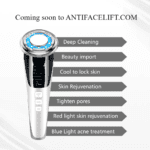
Our EMS Microcurrent Eye Massager (also for lips plumping) boasts an upgraded Light Therapy feature compared to the one showcased in the video. Please enjoy the video or read the feature summary below.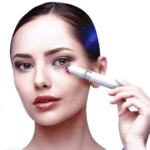
Handset
- RF (Radio Frequency): Heats the deeper dermal layer of skin to contract collagen and stimulate new collagen production, reducing fine lines, wrinkles, and enlarged pores.
- EMS (Electromagnetic Stimulation): Uses microcurrent to improve the resting tone of facial muscles, lifting the mid-face and key areas like the forehead.
- Ionic Deep Cleansing Mode: Uses iontophoresis to improve the absorption of certain topicals, such as ascorbic acid and niacinamide, into the deeper layers of skin.
- LED Therapy: Uses blue light to reduce acne counts by killing acne-forming bacteria and red light to stimulate collagen production.
- Semiconductor Refrigeration: Protects the overlying skin from the heat produced by radio frequency and reduces pore size and skin inflammation.
Eye massager
- LED Function: Uses red light to penetrate deeper skin layers and stimulate collagen production and blue light to address collagen in the superficial skin layers, reducing the appearance of eye bags.
- Thermal Collagen Activation System: Elevates skin temperature to 42 degrees Celsius to increase collagen growth, firm up eyelid skin, and improve lymphatic drainage.
- Sonic Massage: Increases the formation of structural proteins responsible for cell strength, improving wrinkles and relaxing eye muscles.
- Nutrient Uptake Mechanism: Generates an electrical gradient to aid in the absorption of key ingredients, such as ascorbic acid and vitamin B, into the deeper layers of skin.
Overall, both the devices are well-constructed devices with many key features that can effectively treat the signs of aging.
We, at ANTIFACELIFT.com, invite you to purchase both ours and theirs, try them for 3 weeks, then return the one you like least.
The portion of the video that applies to our devices starts at 10:17.
No Fat Loss From At-Home RF Radio Frequency Devices
At-home radio frequency (RF) devices are a safe and effective way to improve the appearance of fine lines, wrinkles, and skin laxity. They work by stimulating collagen production and elastin in the skin. The results are not as dramatic as what you would get in an office procedure, but they are still noticeable.
Key points:
- At-home RF devices are safe and there have been no reports of facial fat loss from these devices.
- The results from at-home RF devices are not as dramatic as what you would get in an office procedure, but they are still noticeable.
- It typically takes 15 to 20 minutes to use an at-home RF device, and you should do it two to three times a week for the first six to eight weeks.
- After six to eight weeks, you should start to see some improvement.
- Thereafter, you need to do it a couple of times a month as maintenance.
Overall, at-home RF devices are a safe and effective way to improve the appearance of fine lines, wrinkles, and skin laxity. However, they are not a substitute for professional treatments.
Dr. Ray
NASA Research Illuminates Medical Uses of Light
This is a summary of article linked here: https://spinoff.nasa.gov/NASA-Research-Illuminates-Medical-Uses-of-Light
NASA research is exploring the use of light in medical settings, such as in the treatment of wounds, pain, and cancer. Here are some of the key findings:
- Wound healing: NASA-developed LED lights have been shown to accelerate wound healing in animals and humans. One study found that LED lights reduced the time it took for wounds to heal by up to 50%.
- Pain relief: LED lights have also been shown to be effective in relieving pain. For example, one study found that LED lights reduced pain by up to 70% in patients with chronic back pain.
- Cancer treatment: NASA-developed light therapies are being explored as a new way to treat cancer. For example, photodynamic therapy (PDT) uses light to activate light-sensitive drugs that kill cancer cells. PDT has been shown to be effective in treating a variety of cancers, including skin cancer, bladder cancer, and lung cancer.
In addition to these specific applications, NASA research is also exploring the use of light to improve overall health and well-being. For example, NASA is developing light therapies to improve sleep, reduce stress, and boost cognitive function.
Here is a summary of the article in bullet points:
- NASA research is exploring the use of light in medical settings to treat wounds, pain, and cancer.
- NASA-developed LED lights have been shown to accelerate wound healing in animals and humans.
- LED lights have also been shown to be effective in relieving pain.
- NASA-developed light therapies are being explored as a new way to treat cancer.
- Photodynamic therapy (PDT) uses light to activate light-sensitive drugs that kill cancer cells.
- PDT has been shown to be effective in treating a variety of cancers, including skin cancer, bladder cancer, and lung cancer.
- NASA research is also exploring the use of light to improve overall health and well-being, such as improving sleep, reducing stress, and boosting cognitive function.
Red Light Therapy Reduces Blood Glucose and Increases Metabolic Rate
This video discusses research showing that exposure to red light can improve metabolic health by increasing mitochondrial function.
- A study on 13,000 people found more sun exposure in the previous week was associated with better insulin sensitivity and less diabetic profiles.
- Red light therapy has been shown to stimulate mitochondrial respiration, increase ATP production, and reduce reactive oxygen species and inflammation. This can lead to lower blood glucose levels.
- A new randomized controlled trial showed 15 minutes of 670nm red light before a glucose tolerance test significantly lowered blood glucose compared to placebo.
- The researchers propose the red light affects water viscosity around ATP synthase, allowing it to spin faster and produce more ATP. Higher ATP production requires more glucose fuel, lowering blood sugar.
- Carbon dioxide levels also increased more with red light, indicating increased metabolism.
- The presenter concludes that adequate sunlight exposure is important for metabolic health, and red light therapy could be useful especially in winter at higher latitudes. But we should aim to spend more time outdoors getting natural sunlight when possible.
Doctor uses red light box for 3 months: Blood test results
- This video discusses the benefits of red light therapy, which uses red and near infrared light to improve health.
- Red light stimulates mitochondria to increase energy production, improves blood flow, and increases antioxidant activity. This can improve muscle recovery, wound healing, skin health, thyroid function, testosterone, and more.
- The host tried using a red light panel daily for 3 months and got blood tests before and after. His tests showed minimal changes, but he felt some benefits like better sleep and less muscle soreness.
- To see benefits, red light therapy needs to be done consistently over time, similar to exercise. Acute dramatic changes are unlikely.
- Not all devices are equal. Good devices use specific therapeutic wavelengths at sufficient power. Poor quality devices won’t provide benefits.
- Natural sunlight provides a balanced spectrum, but indoor lifestyles cause light deficiency. Red light therapy can help fill this deficiency. Getting some outdoor sunlight is still ideal when possible.
- The host recommends using red light therapy for 10 minutes per area, 4-5 times per week. Timing, distance from body, and wavelength can be adjusted based on goals.
- Consistency is key. Benefits emerge over time with regular use. Dramatic effects from sporadic use are unlikely.
NEW Device Can LIFT and TIGHTEN Sagging Skin On Face And Neck | Lumo Review | Chris Gibson (Same as our units but without cooling)
- The video reviews a multi-modal electric facial device that combines several professional anti-aging skin treatments. It uses radiofrequency, red light therapy, electric muscle stimulation, ion cleansing, and cooling.
- Radiofrequency heats deeper skin layers to boost collagen.
- Red light improves circulation and collagen.
- Muscle stimulation tones facial muscles for lifting.
- Ionic cleansing provides a deep facial effect.
- The cooling mode reduces inflammation and puffiness.
- The device has adjustable intensity levels.
- It should be used on clean skin, moving it continuously to avoid excessive heat.
- The recommended usage is 5-8 minutes 1-2 times per week, not daily.
- The reviewer tested the device for 6 months.
- He says it noticeably improved skin tightness, lifting, and refreshment.
- It gives results quickly, becoming part of his weekly routine.
What’s the best non-surgical facelift? Plastic surgeon reveals the stand-out solution (Radio Frequency or RF)
- The video discusses different options for non-surgical skin tightening and anti-aging treatments.
- Treatments like laser, radio frequency, ultrasound, and chemical peels are available. Technology has advanced rapidly in recent years.
- Board-certified plastic surgeon Dr. Richard Westrich is interviewed. He says radio frequency (RF) has emerged as the most effective option for skin tightening in the last 5-10 years.
- RF works by controlled heating of the deeper layers of skin to stimulate collagen production. Other modalities like ultrasound have fallen out of favor.
- Lasers are better for resurfacing and spot reduction rather than tightening. Chemical peels can sometimes be preferable to lasers for resurfacing.
- Dr. Westrich recommends RF for mild to moderate skin laxity, and laser for fine lines, age spots, etc. He advises seeking providers with multiple technology options rather than just one device.
- For sagging eyes, non-surgical options like filler and Botox can help, but surgery remains the gold standard for significant eyelid skin excess.
- In part 2, risks like fat loss will be discussed. Subscribing enables viewers to watch the next video when published.
Lorem ipsum dolor sit amet, consectetur adipiscing elit. Ut elit tellus, luctus nec ullamcorper mattis, pulvinar dapibus leo.